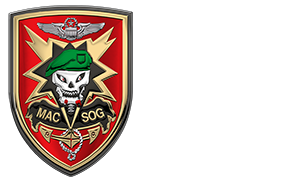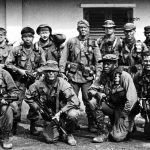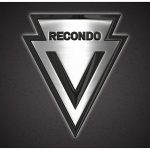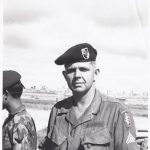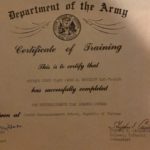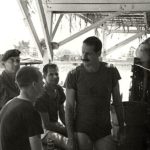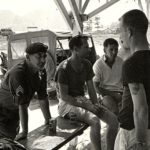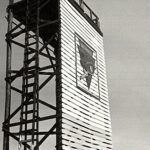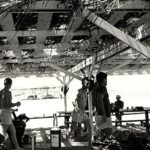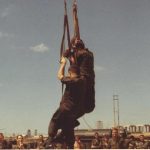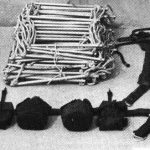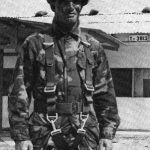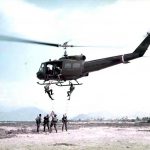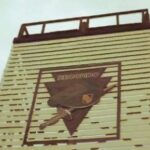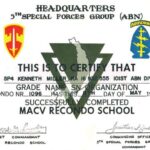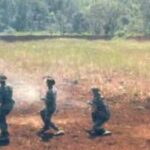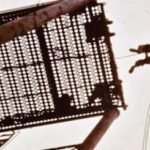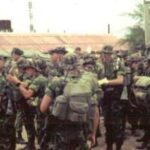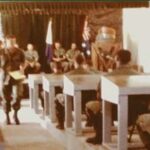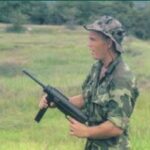Recondo School
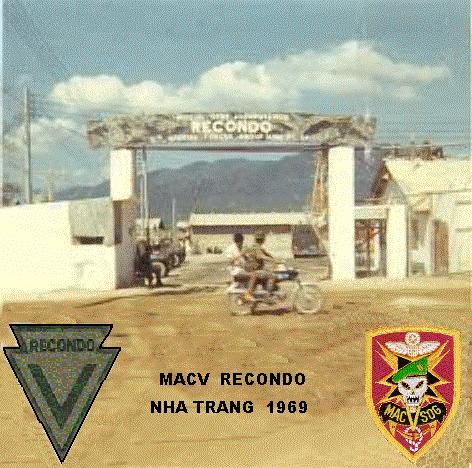
The MACV RECONDO School was originally an extension of Project DELTA. During the times that Project DELTA was on stand down from its mission, the DELTA members trained other soldiers in the art of reconnaissance at their home base in Nha Trang. Other Commands learned of the soldiers being trained by DELTA and were soon sending their own troops to Nha Trang for training. The training mission coupled with Project DELTA’s main mission proved to be too much of a load and an agreement was reached between MACV and 5th Special Forces Group to shift the training to MACV.
On 15 September 1966, by direction of Gen Westmoreland, the 5th SFG established the Military Assistance Command Vietnam, RECONDO School at Nha Trang. The school trained selected troops from all Free World Military Assistance Forces in the long range reconnaissance techniques developed and employed by Project DELTA. The school was able to conduct the following training: a three week reconnaissance-commando course, with a maximum school capacity of 120 students–a class of 60 students began training every two weeks; a one week airborne course for reconnaissance-commando students; mandatory subject training such as escape and evasion and survival; a one week long-range reconnaissance patrol course for men assigned to Projects DELTA, SIGMA and OMEGA and later the Command and Control elements of MACV-SOG; and special training such as high altitude-low opening parachuting, scuba and/or other training missions as required. Selected Vietnam Army cadre were trained also as the nucleus of the Vietnam Army Reconnaissance-Commando School which was established later.
The 281st AHC continued its involvement in the RECONDO training. This involvement allowed the 281st to train its pilots and crewmembers in Special Operations as they were being utilized to help train the troops of RECONDO. Originally the Rat Pack was tasked with supporting RECONDO as the Bandits were tasked to support Special Operations, however as time progressed both platoons supported RECONDO when on stand down from Project Delta.
MACV RECONDO SCHOOL
By Kenn Miller, Recondo #1096
Story courtesy of the Sentinel SFA Chapter 78
Concerned that his division’s paratroopers needed more intensive training in raiding and reconnaissance patrolling, and aware that the US Army Ranger School was unable to provide training on the scale he envisioned to one division, in 1958, 101st Airborne Division commander, Major General William Westmoreland, gave Korean War Medal of Honor recipient Major Lewis Millet the task of establishing a condensed and intense patrolling and raiding school for the division. General Westmoreland chose the name “Recondo” for his school. The “Recon” half of the new word was clear enough, but there is still some lingering debate over the “do” part. Most soldiers younger than General Westmoreland assumed the name was a combination of recon and commando, but some sources say that General Westmoreland’s original sense of things was that “do” came from the WW1 nickname for American soldiers, “Doughboy.” To a generation accustomed to Pillsbury TV commercials featuring the fat and giggly “Pillsbury Dough Boy” that was absolutely unacceptable. Whatever General Westmoreland originally intended, to everyone else “Recondo” has always stood for “reconnaissance commando.” When he later became commandant of the US Military Academy, General Westmoreland also instituted a less intense program of Recondo training at West Point. And later, in Vietnam, General Westmoreland played a major part in establishing the most famous Recondo school of them all — MACV Recondo School.
When conventional US troop units began deploying to Republic of Vietnam, the men of Project Delta (B-52) and its predecessor, Project Leaping Lena, had already honed their skills and gained experience in conducting reconnaissance and other special operations in Vietnam — as well as in training indigenous troops in these arts. It soon became evident that the conventional units would need a reconnaissance capability beyond their organic cav troops and infantry battalion recon platoons. In September 1966, the 1st Brigade 101st Airborne Division sent ten paratroopers through Delta’s training program, and soon other units were begging to send some of their soldiers through the course. By August 1966, things were getting out of hand. Delta’s CO went to Colonel Kelly — who at this time was reorganizing and expanding 5th SF Group’s intelligence operations, and in the process of organizing Project Omega (B-50) and Project Sigma (B-56) and a Group Recon School, and bringing them on line. In the midst of all this, Project Delta was also training LRRPs for the conventional units. Colonel Kelly went to General Westmoreland (by then MACV’s commanding general), and on July 1st, 1966, Major A.J. Baker was given the job of forming and commanding the MACV Recondo School, based on Delta’s recon experience and the 101st’s Recondo School. From that beginning, the MACV Recondo School at Nha Trang was on its way.
When conventional US troop units began deploying to Republic of Vietnam, the men of Project Delta (B-52) and its predecessor, Project Leaping Lena, had already honed their skills and gained experience in conducting reconnaissance and other special operations in Vietnam — as well as in training indigenous troops in these arts. It soon became evident that the conventional units would need a reconnaissance capability beyond their organic cav troops and infantry battalion recon platoons. In September 1966, the 1st Brigade 101st Airborne Division sent ten paratroopers through Delta’s training program, and soon other units were begging to send some of their soldiers through the course. By August 1966, things were getting out of hand. Delta’s CO went to Colonel Kelly — who at this time was reorganizing and expanding 5th SF Group’s intelligence operations, and in the process of organizing Project Omega (B-50) and Project Sigma (B-56) and a Group Recon School, and bringing them on line. In the midst of all this, Project Delta was also training LRRPs for the conventional units. Colonel Kelly went to General Westmoreland (by then MACV’s commanding general), and on July 1st, 1966, Major A.J. Baker was given the job of forming and commanding the MACV Recondo School, based on Delta’s recon experience and the 101st’s Recondo School. From that beginning, the MACV Recondo School at Nha Trang was on its way.
The quality of instruction and leadership at MACV Recondo was of a level that very few of the students had ever experienced. Among the instructors/advisers were some of the best trained and most experienced reconnaissance men to ever run a long range patrol. SFA Chapter 78 member Brad Welker was a member of the Recondo School cadre, and he still speaks with awe of some the men he worked with. He remembers that the idea of sending a very experienced senior SF recon NCO on a five day mission with five men from different units and coming from different AOs, and who hardly knew each other was “controversial.” It may have been controversial at SF, but among Recondo students there was no controversy. I know at least a couple hundred MACV Recondo graduates, and I have never heard anything but praise and gratitude for the school, and deep and abiding respect and admiration for the “advisers” who instructed us and lead us.
The quality of instruction and leadership at MACV Recondo was of a level that very few of the students had ever experienced. Among the instructors/advisers were some of the best trained and most experienced reconnaissance men to ever run a long range patrol. SFA Chapter 78 member Brad Welker was a member of the Recondo School cadre, and he still speaks with awe of some the men he worked with. He remembers that the idea of sending a very experienced senior SF recon NCO on a five day mission with five men from different units and coming from different AOs, and who hardly knew each other was “controversial.” It may have been controversial at SF, but among Recondo students there was no controversy. I know at least a couple hundred MACV Recondo graduates, and I have never heard anything but praise and gratitude for the school, and deep and abiding respect and admiration for the “advisers” who instructed us and lead us.
Like Previous ranger units, from the mid-1600s to the Second World War, the LRRP (or LRP) units were raised in a theater of war and organized and trained in a theater of war. The success of the LRRP units that were formed into the 75th Infantry Regiment (Ranger) in February, 1969, owed an enormous debt to SF and the MACV Recondo School. And though for some reason that puzzles and annoys many Vietnam veterans it is probably not politically correct to say so around Fort Benning these days, it is an historical fact that the 75th Infantry Regiment (Ranger) became today’s 75th Ranger Regiment. During the Vietnam War the Ft. Benning Ranger School was heavily tasked with training infantry officers and unable to do much for the Rangers manning the recon teams in Vietnam. The Commando Depot in Scotland that had trained so many World War Two Rangers was long gone. But the LRRP/Rangers who served in Vietnam had the now legendary MACV Recondo School. Although their missions and cultures differ, the historical lineage of US Army Special Forces and US Army Rangers are very much entwined, and it is not too much of a stretch to say that without SF and the Recondo School, there very likely would be no 75th Ranger Regiment today.

